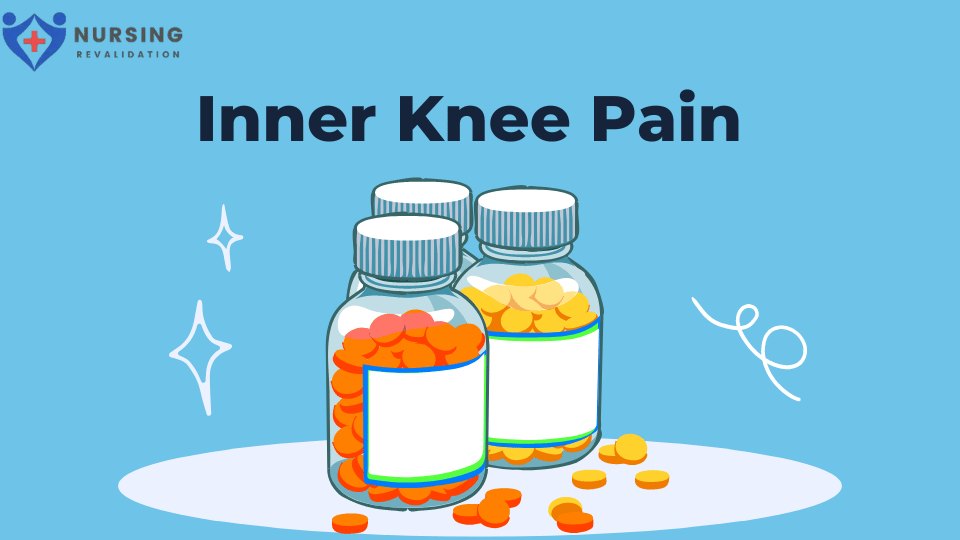Knee pain is a common problem affecting people of all ages. While most knee pain originates on the outer part of the knee, inner knee pain is less common but can be equally debilitating. medial knee pain is pain that occurs on the inside part of your knee joint and can be caused by several factors such as injury, overuse, or underlying medical conditions. This article will provide an overview of the causes, symptoms, and treatment options for inner knee pain.
What is Inner Knee Pain?
Inner knee pain refers to any discomfort felt on the inner side of the knee joint. This pain can be caused by various factors such as injury, overuse, or underlying medical conditions. The knee joint is made up of three bones, the thighbone (femur), the shinbone (tibia), and the kneecap (patella). The inner part of the knee joint is where the femur and tibia bones meet and is supported by the medial collateral ligament (MCL).
Causes of Inner Knee Pain
Several factors can cause inner knee pain, including:
1. Medial Collateral Ligament (MCL) Injury
The MCL is a band of tissue that runs along the inner part of the knee joint. It helps stabilize the knee joint and prevent it from bending inward. Injuries to the MCL can occur due to sudden trauma, such as a blow to the knee, or due to repetitive stress over time. Symptoms of an MCL injury include pain, swelling, and difficulty walking.
2. Meniscus Tear
The meniscus is a cartilage that acts as a cushion between the femur and tibia bones in the knee joint. A meniscus tear can occur due to sudden twisting of the knee or due to wear and tear over time. Symptoms of a meniscus tear include pain, swelling, and a popping sound during movement.
3. Osteoarthritis
Osteoarthritis is a degenerative joint disease that affects the knee joint. It occurs when the cartilage in the knee joint wears down over time, causing bone-on-bone contact and pain. Symptoms of osteoarthritis include pain, stiffness, and swelling.
4. Patellofemoral Pain Syndrome
Patellofemoral pain syndrome is a condition that causes pain in the front of the knee, including the inner part of the knee joint. It occurs when the kneecap rubs against the femur bone, causing pain and discomfort. Symptoms of patellofemoral pain syndrome include pain, stiffness, and a popping or cracking sound during movement.
Symptoms of Inner Knee Pain
- Pain on the inner side of the knee joint
- Swelling and stiffness
- Difficulty bending or straightening the knee
- A popping or cracking sound during movement
- Difficulty walking or standing for long periods

Treatment Options for Inner Knee Pain
Treatment options for medial knee pain depend on the underlying cause and severity of the condition. Some common treatment options include:
1. Rest and Ice
If your medial knee pain is due to an injury or overuse, rest and ice can help reduce swelling and inflammation. Resting the knee joint and applying ice to the affected area can help alleviate pain and promote healing.
2. Physical Therapy
Physical therapy can help improve strength, flexibility, and range of motion in the knee joint. A physical therapist can develop a customized exercise program to help alleviate pain and improve overall knee function.
3. Medications
Over-the-counter pain relievers, such as acetaminophen or ibuprofen, can help alleviate pain and reduce inflammation. Your doctor may also prescribe stronger pain medications or corticosteroid injections if your pain is severe.
4. Knee Braces
A knee brace can provide additional support to the knee joint and help alleviate pain. Depending on the underlying cause of your medial knee pain, your doctor may recommend a specific type of knee brace.
5. Surgery
In severe cases, surgery may be necessary to alleviate medial knee pain. The type of surgery will depend on the underlying cause of your pain and may include procedures such as arthroscopy or knee replacement.
Preventing Inner Knee Pain
While not all cases of medial knee pain can be prevented, there are steps you can take to reduce your risk. These include:
- Maintaining a healthy weight to reduce stress on the knee joint
- Wearing proper footwear for your activity level
- Strengthening the muscles around the knee joint through exercise
- Avoiding activities that put excessive stress on the knee joint
Conclusion
Inner knee pain can be a frustrating and debilitating condition that can affect your daily life. However, with proper treatment and prevention strategies, it is possible to alleviate pain and improve knee function. If you experience persistent medial knee pain, it is important to consult with your doctor to determine the underlying cause and develop an appropriate treatment plan.
FAQs
What are some common causes of inner knee pain?
Some common causes of inner knee pain include MCL injury, meniscus tear, osteoarthritis, and patellofemoral pain syndrome.
What are some treatment options for inner knee pain?
Treatment options for inner knee pain depend on the underlying cause and severity of the condition. Some common treatment options include rest and ice, physical therapy, medications, knee braces, and surgery.
Can inner knee pain be prevented?
While not all cases of inner knee pain can be prevented, there are steps you can take to reduce your risk, such as maintaining a healthy weight, wearing proper footwear, and strengthening the muscles around the knee joint.
When should I see a doctor for inner knee pain?
If you experience persistent inner knee pain, swelling, or difficulty walking, it is important to consult with your doctor to determine the underlying cause and develop an appropriate treatment plan.

